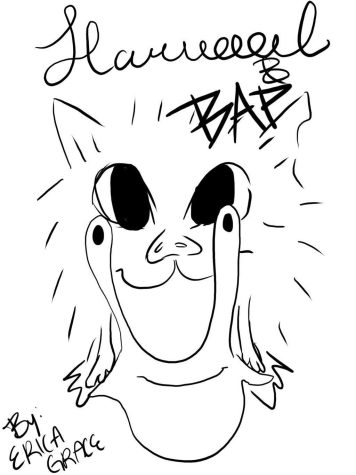Exploring Hemingway’s Legacy in 2021
May 8, 2021
The first time I read Hemingway was when my eighth grade English class read ‘Old Man and the Sea’. Unable to understand Hemingway’s terse language, I was not interested in reading the book at hand. It was in high school that I began to learn more about Hemingway, not just as an author, but as a person. As I heard him referenced in English class, at the dinner table, and even in the TV shows I was watching, I began forming an image of him in my mind. Hemingway, I imagined, was an indisputably talented writer, a quintessential man’s man, and a misogynist, known to disrespect and undervalue the women in his life.
When I sat down to watch the PBS Hemingway documentary by Ken Burns and Lynn Novak, I found myself drawn to Hemingway’s story as I absorbed the interesting and unexpected details of his life. One of the greatest surprises was that, for a man who died at 61, Hemingway had lived an astonishingly full life. The image of Hemingway that I’d formed through reading his works began to fade as I was introduced to the writer as well as the man. I learned that in addition to writing fiction, Hemingway had been a renowned war correspondent. He reported from the Greco-Turkish war in 1922, the Spanish Civil War in 1937, and Second Sino-Japanese War in 1941. Another revelation was Hemingway’s obsession with Spanish bull fights. Hemingway, I was surprised to learn, had followed matadors across Spain and watched an estimated fifteen hundred bull fights. Later in his life, he spent months on safari in Kenya, where he hunted big game animals. After becoming seriously injured in back-to-back plane crashes in Kenya, the news that Hemingway had died spread around the world. He was the first and the only writer to read his own obituaries, which were published internationally. Although Hemingway had narrowly escaped death in Kenya, he sustained major head injuries which affected his health as well as his writing. In his last days, Hemingway struggled to put sentences together, and was institutionalized at the Mayo Clinic for severe depression and psychotic episodes.
Although Hemingway has no doubt shaped American Literature with his incredible, thought-provoking writing, it is important to hold him accountable for his many faults and prejudices. In their portrayal of Hemingway, Burns and Novak do not shy away from criticism of his character. As the documentary introduces Hemingway’s many works, the narrator describes the gratitious use of racial slurs in his writing. Hemingway’s anti-Semitism is revealed through the documentary’s analysis of The Sun Also Rises. As the documentary describes Hemingway’s trek across Spain and the novel inspired by his fascination with Spanish bull fights, it introduces writer Harold Loeb as a close friend to Hemingway. Despite their closeness, In The Sun Also Rises, Hemingway creates a blatantly anti-Semitic caricature of Loeb, who he portrays as the story’s villain. Anyone familiar with Hemingway and his writing is aware of his reputation as a womanizer, but Hemingway’s treatment of women goes deeper than his extramarital affairs. The documentary explores the fraught dynamics of Hemingway’s many marriages, describing his emotional and physical abuse of his wives. Although Hemingway has no doubt earned his reputation as one of the greatest American writers, it is important to hold him accountable instead of glossing over his racism, anti-Semitism, and abuse of women.









